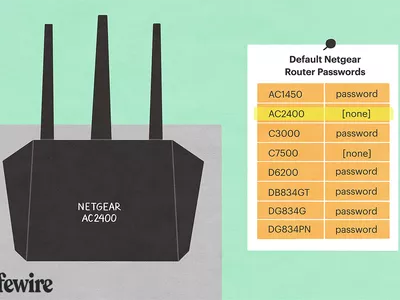
1. Simple Steps to Fortify Your Home Wi-Fi Security: Insights From MalwareFox

1. Simple Steps to Fortify Your Home Wi-Fi Security: Insights From MalwareFox
Modern technology is evolving at a rapid pace making human lives more and more comfortable. However, to utilize the full potential of ever-advancing technology, we need modern gadgets.

Stay malware-free with reliable antivirus
Don’t compromise your Data and Privacy. TotalAV is a top-notch antivirus program that handles various viruses, trojans, and other malware that may target your devices. It will safeguard your devices and enhance your system performance.
4.9/5
⭐ Editor’s Choice
✔️ Excellent Malware Detection
✔️ Multiple set of Features
✔️ 30 Day Money-Back
This over-reliance on machines and gadgets might be making life easier but has also opened the gates for many security threats. One of the major ones is Wi-Fi Network security.
Today most tech-savvy people have made their homes modern and intelligent by adding IoT devices like smart home surveillance, smart TVs, smart electric appliances (bulbs, fans, etc.), and many more. All these devices have one common thing that they are all purely internet-based and require Wi-Fi or LAN network to work. This is where the problem lies.
Though most smart devices today are effectively built, keeping in mind the security and privacy risks they can possess, the same cannot be said for the Wi-Fi network they are all connected to. Since the evolution of Wi-Fi networks, cyberattackers actively target unsecured home networks as they are pretty easy to infiltrate, given the lack of cybersecurity knowledge to regular users.
Most regular smart gadget users purchase the most advanced and secured smart devices for their home but do not even heed over the internet security on which their smart devices are connected. Subsequently, the Wi-Fi networks have become a very soft target for attackers to infiltrate even the most secured device.
Many aspects have to be checked to keep the home network secure from the prying eyes of the infiltrators. This is where this post will guide you.
Let’s walk through the most critical factors that need to be addressed to secure Wi-Fi networks.
Ultimate Guide to Public WiFi Security
Disclaimer: This post includes affiliate links
If you click on a link and make a purchase, I may receive a commission at no extra cost to you.
The Router Quality
This is one of the most crucial points which commonly gets ignored by the users. When you apply for a Wi-Fi connection, usually, the Internet Service Provider (ISP) also provides the Wi-Fi router with their plan. However, most regular users are unaware that router quality is a significant factor in deciding overall home network security. The ISPs take advantage of this lack of knowledge and install poor quality Wi-Fi routers, thereby saving some costs.

Make sure your Wi-Fi router supports these security measures:
Secure Protocol
It must be capable of supporting the latest, most secured protocol, WPA3. If it could support the WPA2 Personal or WPA2 Enterprise protocols, it is also considered secure as they follow Advanced Encryption Standard (AES).
Latest Firmware
The Wi-Fi router runs on a low-level OS known as Firmware. It controls everything your router performs. To ensure a secure home network, you must check on which Firmware your router is running on. It should get frequent updates to keep up with the latest security patches. The best ones are DD-WRT, OpenWRT, or Tomato.
If you observe that your ISP is not providing you a secure router, you can ask them to change or buy a better one yourself, considering the aforementioned factors.
Enable the Encryption

Encryption is the most effective way to secure your data while connected to a network. As mentioned, currently, WPA3 is the most effective encrypting protocol for Wi-Fi. However, those running on WPA2 are also secured enough. By default, the encryption is turned off in the router. So, as soon as your internet service provider installs the Wi-Fi router, make sure to enable the latest WPA encryption available.
Change SSID and Default Password

After the router installation, the SSID and password are the first two things you will be asked to set up. Service Set Identifier or SSID is the name of your Wi-Fi network. By default, it is the router manufacturer’s or ISP’s name. It is advised to change the SSID and the default password as soon as you can. Hackers always look for such opportunities as most default passwords are the same as the SSID, so they don’t have to put any extra effort to infiltrate your Wi-Fi. Choose the Wi-Fi password wisely and make it robust enough so that even skilled hackers couldn’t crack it.
Hide Wi-Fi SSID
If you are highly concerned about your Wi-Fi security, hiding the Wi-Fi SSID might ease you out, although making it inconvenient to connect to the network. As mentioned, Wi-Fi SSID is the unique name of your network through which your network will be recognized and get connected to. Although securing the SSID with a strong password is more than enough to keep it away from hackers, sometimes you might not even want your Wi-Fi network to display around.

Fortunately, you have the option to hide your Wi-Fi SSID by log in to your router’s web-based management page. Though, you have to keep in mind that hiding the SSID does not guarantee total security as your network is still there but just in the hidden form. A skilled hacker has various tools to bring out the hidden SSID.
Enable Firewall

A firewall is generally the first defense when encountering external threats. It acts as a barrier between the hackers and the devices connected to the network. Typically, every good Wi-Fi router comes with an in-built firewall which for some reason is by default turned off. So, to secure the Wi-Fi network, ensure that the firewall is functioning appropriately. If the router does not have a firewall, it is advised to install a robust firewall on your devices connected to the network.
Disable WPS

Wi-Fi Protect Setup (WPS) is an excellent feature that was built to make the user experience better and quicker while connecting to a Wi-Fi router. However, today it is considered as one of the significant security faults. WPS lets you quickly connect to the Wi-Fi without entering the username or password. For that, every router has a WPS switch. If you press the WPS switch and the button on your device together, it will create a pair, and your device will be connected automatically to the network using a PIN.
However, the intruders can easily get the PIN used for pairing by applying various permutations and combinations, making the WPS a threat. So, if WPS is enabled on your Wi-Fi network, it would be better if you disable it for security. The good thing is, most routers easily allows user to disable this feature.
Create a Guest Network

If you are organizing a party or have visitors in your house for any reason, you don’t need to provide your personal SSID and passwords for them to connect to the Wi-Fi. Modern ISPs offer you the option to create a separate guest network for the visitors in your home. You can create a unique SSID and password just for the guests. In this way, your personal network on which all your devices are connected will be secured from the unknown, unsafe guest devices. Apart from that, you can divide your network into more parts too. For example, a separate SSID for all your IoT devices will isolate them from your other devices.
Install Security Programs on your Devices
Even after following all the above preventive measures, the risk of hacking is still there because human error is inevitable. So, installing a robust security program is a must on all the supporting devices. One of the best security apps, which is robust enough to deal with the latest external threats is Malwarefox.
MalwareFox is a lightweight antimalware for Android devices. It works on the heuristic approach to detecting malicious apps from your phone. This app prevents malware, spyware , and phishing attacks . It ensures that your personal data stays private. Unlike typical security app, MalwareFox is lightweight and can scan your system 350% faster. It does not affect the performance of your devices, which means you can continue using other apps while scanning finishes.

Key Features of MalwareFox Antimalware:
- Quick Scan – Quickly scans the apps and files on your phone for possible infection.
- Real-Time Protection – Blocks malware from entering your phone.
- Enhanced Protection – Stops spyware , keyloggers , and Potentially Unwanted Apps (PUA).
Why is it important to protect a wi-fi network?
Today every smart gadget including your smartphones, PCs, smart TVs, surveillance camera, and IoT devices requires Wi-Fi to run. This makes securing the Wi-Fi network from cyberattackers an important aspect.
How do I know my wi-fi is secure?
If you have enabled encryption, set a strong password, disabled WPS, enabled Firewall, and followed other security aspects listed in this post, your Wi-Fi is secured.
12 Best WiFi Protection Apps for your Devices
Leave a Comment Cancel reply
Comment
Name Email
Save my name, email, and website in this browser for the next time I comment.
Δ
Also read:
- [New] Mastering the Art of Screenshot with ZD Software
- [New] Virtual Makeup Mavens Top YouTube Creators for 2024
- [Updated] 2024 Approved Android & iPhone's Hottest Social Tools to Increase FB Likes
- 發現微軟Word在Windows上的自動保存路徑:一項完整指南
- Fast and Secure Peer-to-Peer Data Transfer: Connecting Laptops Instantly
- Game-Changing Rig: Razer Basilisk V3 Pro - Zero Lag, Ultimate Speed
- In 2024, How to Cast Itel S23 to Computer for iPhone and Android? | Dr.fone
- Les Techniques Pour Déplacer Des Fichiers De Classe Vers D'Autres Disques Dur Windows 11
- Overcoming Window's 11 Update Error (0X80240034) – Tips and Solutions for a Smooth Upgrade
- Possibility of Recovering Lost Images From Olympus Camera: A Comprehensive Guide - MyRecovery
- So Holst Du Gestohlene Videodateien Von Deiner SD-Karte Wieder, Auch Ohne Tools
- Synthèse Et Comparaison De Deux Stratégies Pour Réplication Entre Systèmes NAS Synology
- The Art of Professionalising A Roadmap in Graphic Design for 2024
- Top 4 Methods to Enhance Safari Performance on Your iOS Device
- プロフェッショナルデバッグ - AOMEI ONEKEY Recovery for Individuals & Home Environments
- Title: 1. Simple Steps to Fortify Your Home Wi-Fi Security: Insights From MalwareFox
- Author: Joseph
- Created at : 2024-11-15 21:09:28
- Updated at : 2024-11-16 20:29:11
- Link: https://win-lab.techidaily.com/1-simple-steps-to-fortify-your-home-wi-fi-security-insights-from-malwarefox/
- License: This work is licensed under CC BY-NC-SA 4.0.